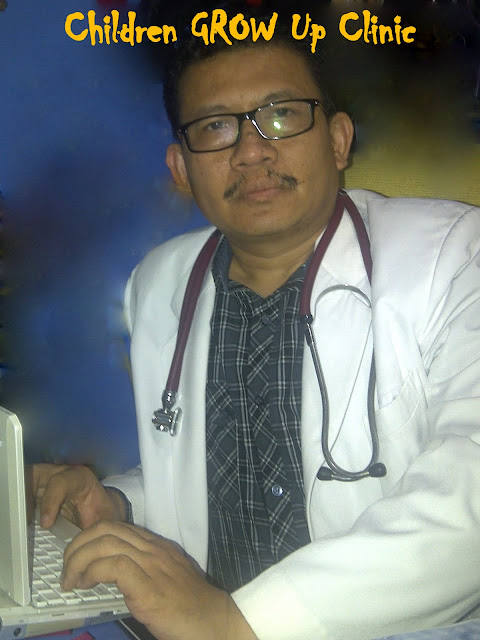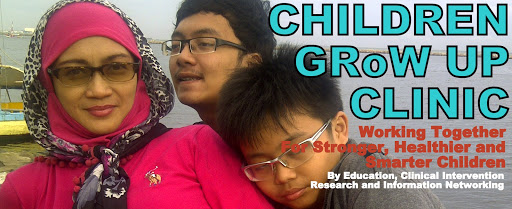MAIN ABSTRACT: Sensory oral motor and global motor development of preterm infants
de Castro AG, et al.
Pro Fono. 2007 Jan-Apr;19(1):29-38.
Abstract
BACKGROUND: development assessment of preterm infants.
AIM: to evaluate the association between the gestational ages (GA) of premature infants with the global motor development as well as with early signs of sensory oral motor development delay, and to verify a possible association between them.
METHOD: an exploratory study that assessed the development of 55 infants with corrected chronological ages between four to five months, born preterm at the Instituto Materno Infantil Professor Fernando Figueira (IMIP) and who were followed at the Kangaroo Mother Program Clinic between March and August of 2004. The assessment of the sensory oral motor development was performed through pre-selected indicators and of the global motor development through the Alberta Infant Motor Scale (AIMS).
RESULTS: infants with lower GA (29 to 34 weeks) presented a higher median of risk signs in the sensory oral motor development assessment when compared to those with higher GA (35 to 36 weeks). Regarding the global motor development, infants born with lower GA presented a higher number of scores in the AIMS below percentile 10 (26%) when compared to those with a higher GA (4%) (p=0.009). The median index of the risk signs for the sensory oral motor development were significantly higher among infants with total AIMS scores below percentile 25 when compared to those with scores equal to or above percentile 25.
CONCLUSION: the gestational age of infants at birth influenced the sensory oral motor and global motor development – infants with lower gestational ages presented worse performances. These findings suggest a possible association between both aspects of infant development.
Source: Universidade Federal de Pernambuco.
ABSTRACT I: Oral-motor dysfunction at 10 months corrected gestational age in infants born less than 37 weeks preterm.
Buswell CA, et al.
Dysphagia. 2009 Mar;24(1):20-5. Epub 2008 Aug 8..
Abstract
Feeding difficulties are common in preterm infants. These may be associated with inadequate dietary intake, poor growth, and parental anxiety. Oral-motor dysfunction has been observed in preterm infants during sucking and the early stages of weaning but has not been rigorously studied in later infancy when eating a range of food consistencies. We aimed to establish if oral-motor dysfunction during feeding occurs in preterm infants in later infancy and to explore the relationships with specific neonatal risk factors: gestational age at birth, prolonged supplementary oxygen requirement, and delay in establishing full oral feeding. Infants born less than 37 weeks gestational age were evaluated once at 10 months corrected gestational age using a validated feeding assessment (Schedule for Oral Motor Assessment). Fifteen infants were enrolled (9 males, 6 females; median gestational age at birth = 33 weeks, range = 25-36 weeks; median birth weight = 1890 g, range = 710-2950 g). Oral-motor dysfunction was observed in three infants all born after 31 weeks gestation. No relationship was found with the neonatal risk factors. This study indicates that oral-motor dysfunction may occur in later infancy and is not easily predicted from specific neonatal risk factors. Further study is required to evaluate the true prevalence and the health implications of oral-motor dysfunction in this population in later infancy.
Source: Newcastle upon Tyne Hospitals Foundation Trust (NHS), Newcastle upon Tyne, UK
ABSTRACT II: Motor development from 4 to 8 months corrected age in infants born at or less than 29 weeks’ gestation.
Authors: Pin TW, et al.
Dev Med Child Neurol. 2009 Sep;51(9):739-45. Epub 2009 Mar 9.
Source: The University of Melbourne, Victoria, Australia.
Abstract
AIM: Clinically, preterm infants show motor delay and atypical postures compared with their peers born at term. A longitudinal cohort study was designed to describe the motor development of very preterm infants from 4 to 18 months corrected age (CA). The study was also designed to investigate how the atypical postures observed in early infancy in the preterm infants might be related to their later motor development. Here we report the findings in early motor skills from 4 to 8 months CA.
METHOD: Early motor skills were assessed in 62 preterm infants (32 males, 30 females, mean gestation 26.94wks, SD 1.11) and 53 term infants (32 males, 21 females, mean gestation 39.55wks, SD 1.17) using the Alberta Infant Motor Scale (AIMS).
RESULTS: The preterm infants demonstrated different motor behaviours from their term peers, with an uneven progression of motor skills in different positions from 4 to 8 months CA. At 8 months CA, 90%of the term infants were able to sit without arm support, but only 56%of the preterm infants could maintain sitting very briefly without arm support.
INTERPRETATION: This uneven progression may have been due to an imbalance between the active flexor and extensor strength and hence inadequate postural control in these positions. The AIMS has also been shown to be a valid assessment tool to demonstrate unique characteristics in movement quality in the preterm population.
ABSTRACT III: Early gross motor development of preterm infants according to the Alberta Infant Motor Scale.
Authorsvan Haastert IC, et al.
J Pediatr. 2006 Nov;149(5):617-22.
Source: University Medical Center Utrecht, Departments of Neonatology and Pediatrics, Wilhelmina Children’s Hospital, Utrecht, The Netherlands. i.vanhaastert@umcutrecht.nl
Comment in
J Pediatr. 2006 Nov;149(5):593-4.
Abstract
OBJECTIVE: To systematically examine gross motor development in the first 18 months of life of preterm infants.
STUDY DESIGN: A total of 800 preterm infants (356 boys), ages between 1 and 18 months and corrected for degree of prematurity, were assessed with the use of the Alberta Infant Motor Scale.
RESULTS: Comparison of the mean Alberta Infant Motor Scale scores of the preterm infants with the norm-referenced values derived from term infants revealed that as a group, the preterm infants scored significantly lower at all age levels, even with full correction for degree of prematurity.
CONCLUSIONS: In general, preterm infants exhibit different gross motor developmental trajectories compared with term infants in the first 18 months of life. The gross motor developmental profile of preterm infants may reflect a variant of typical gross motor development, which seems most likely to be specific for this population. As a consequence, adjusted norms should be used for proper evaluation and clinical decision-making in relation to preterm infants.
ABSTRACT IV: Mental and motor development in preterm infants: the issue of corrected age.
Lems W, et al.
Early Hum Dev. 1993 Sep;34(1-2):113-23.
Abstract
This paper addresses the question of whether corrected age needs to be applied to both the mental and motor development of preterm infants during the whole of the first year. A neglected problem in this respect is that a precise developmental index cannot be found with very low or very high raw scores. Using an alternative measure of performance (age equivalent deviation score), 36 preterm infants without serious medical or neurological problems were compared with 21 full-term infants on the Dutch version of the Bayley Mental Scale at the corrected ages of 12, 18, 24, 39 and 52 weeks and the Psychomotor Scale at 24, 39 and 52 weeks. Our findings suggest that full correction should be used in assessing the mental development of relatively healthy preterm infants during the second half of the first year. Assessments at earlier ages seem to overestimate the mental abilities of preterm infants, thus indicating that partial correction should be applied at these ages. For motor development during the second half of the first year a partial correction would seem more appropriate. The clinical implications of our findings are discussed.
Source: Department of Educational Sciences, Faculty of Human Movement Sciences, Free University, Amsterdam, Netherlands.
supported by
CHILDREN GRoW UP CLINIC Yudhasmara Foundation Inspirasi Orangtua, Tumbuhkan Anak Semakin Sehat, Kuat dan Cerdas
 CHILDREN GRoW UP CLINIC I Jl Taman Bendungan Asahan 5 Bendungan Hilir Jakarta Pusat 10210, phone (021) 5703646 – 44466102
CHILDREN GRoW UP CLINIC I Jl Taman Bendungan Asahan 5 Bendungan Hilir Jakarta Pusat 10210, phone (021) 5703646 – 44466102- CHILDREN GRoW UP CLINIC II MENTENG SQUARE Jl Matraman 30 Jakarta Pusat 10430, phone (021) 44466103
- email :
- http://childrengrowup.wordpress.com
WORKING TOGETHER SUPPORT FOR STRONGER, SMARTER AND HEALTHIER CHILDREN BY EDUCATION, CLINICAL INTERVENTION, RESEARCH AND NETWORKING INFORMATION. Advancing of the future pediatric and future parenting to optimalized physical, mental and social health and well being for fetal, newborn, infant, children, adolescents and young adult
LAYANAN KLINIK KHUSUS “CHILDREN GRoW UP CLINIC”
PROFESIONAL MEDIS “CHILDREN GRoW UP CLINIC”
|
Clinical – Editor in Chief :
 Dr WIDODO JUDARWANTO SpA, pediatrician
Dr WIDODO JUDARWANTO SpA, pediatrician
- email :
- curriculum vitae
- For Daily Newsletter join with this Twitter https://twitter.com/WidoJudarwanto
Information on this web site is provided for informational purposes only and is not a substitute for professional medical advice. You should not use the information on this web site for diagnosing or treating a medical or health condition. You should carefully read all product packaging. If you have or suspect you have a medical problem, promptly contact your professional healthcare provider

Copyright © 2012, CHILDREN GRoW UP CLINIC Information Education Network. All rights reserved











